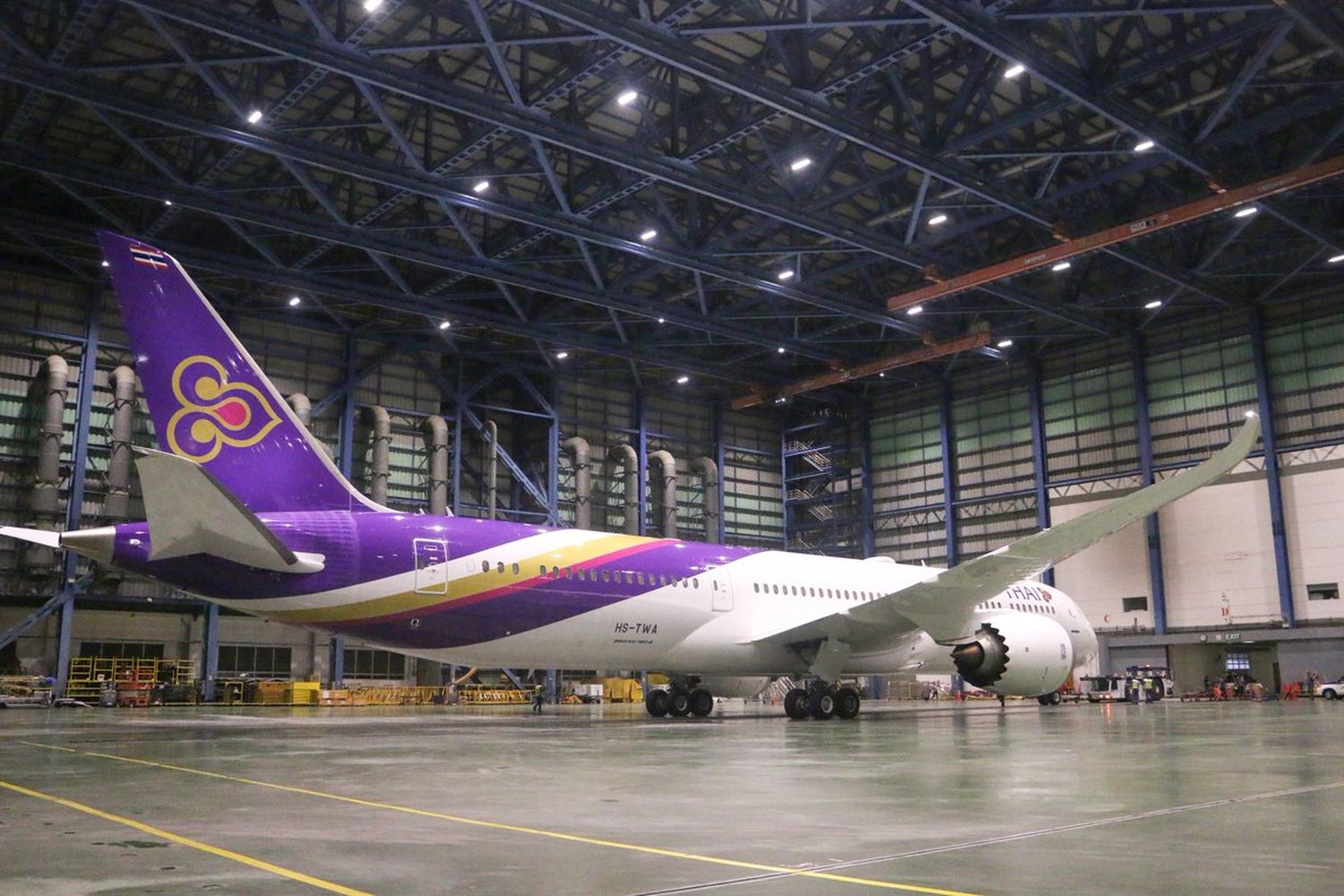Thai Airways confirmed today an order of 45 Boeing 787 Dreamliners, concluding months of negotiations and industry speculation. The decision on the aircraft model had been subject to competition from the Airbus A350-900, a model that was ultimately dismissed due to the costs of engine options.
The partially state-owned airline is experiencing a positive financial recovery after several years of precariousness, exacerbated during the COVID-19 health crisis. The pandemic forced Thai Airways to dismantle and abandon leasing agreements for various aircraft models, including the retirement of the older Airbus A380, Boeing 747-400, Boeing 777-200, Boeing 777-300, and A330-300 from its fleet.
To optimize operations and human resources, Thai Airways merged its low-cost subsidiary, Thai Smile, with the parent company, which previously operated solely in the domestic market.
Following this restructuring, which allowed the airline to start generating revenue again, negotiations were initiated with Airbus and Boeing for a mega order focused on the long-haul fleet, which had been dismantled.
See Also: As it moves away from the red, Thai Airways considers acquiring a hundred aircraft
This process concluded with an agreement for the Boeing 787 Dreamliner, without specifying variants, with delivery dates between 2027 and 2033, as reported by The Bangkok Post citing a statement from Thai Airways. The order includes an unspecified number of options. It also includes the selection of engines, choosing General Electric’s GEnx over the Rolls-Royce Trent 1000.
The choice of model occurred after evaluating the Airbus A350-900, of which Thai Airways currently has eighteen aircraft and two more pending delivery. The company cites a pricing disagreement with Airbus regarding the Rolls-Royce engines that power the A350.
Thai did not disclose the total value of the deal but hinted that more details would be provided during the Singapore Airshow, between February 20 and 25.

The Path to Fleet Homogenization
Prior to the COVID-19 health crisis, Thai had a variety of aircraft models in its fleet, making it financially unsustainable, compounded by fierce competition from low-cost airlines like Nok Air and AirAsia in Southeast Asia.
With the recent agreements, the company will significantly reduce the number of models in its fleet, with the goal of having 100 aircraft by 2033.
Following integration with THAI Smile, the airline resumed operations with the Airbus A320ceo for the regional and domestic market, with twenty aircraft. Starting in 2025, it will receive its first twelve Airbus A321neos, progressively replacing its narrow-body fleet.
Now, with the confirmation of the Boeing 787 Dreamliners, the aircraft will progressively replace the existing long-haul fleet, consisting of five Airbus A330-300, five Boeing 777-200 (ER), and 17 Boeing 777-300 (ER), once their leasing contracts are concluded. Thai stated that the new fleet would boost its international destination network, allowing it to earn revenues of 180 billion baht a year starting in 2025.
Thai has not announced whether it will replace its Airbus A350 and/or its current five Boeing 787-8 and two Boeing 787-9, powered by Rolls-Royce engines.


Comentarios
Para comentar, debés estar registrado
Por favor, iniciá sesión